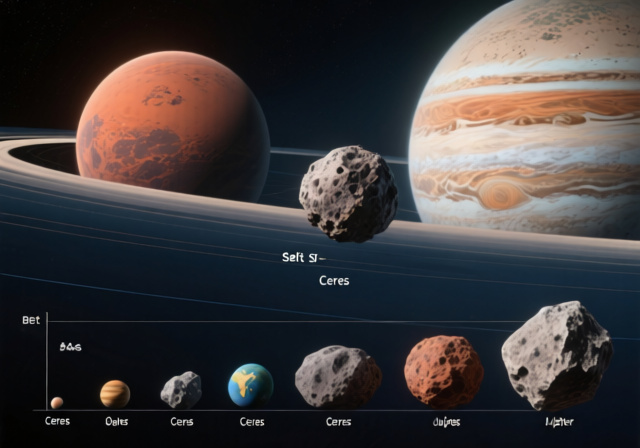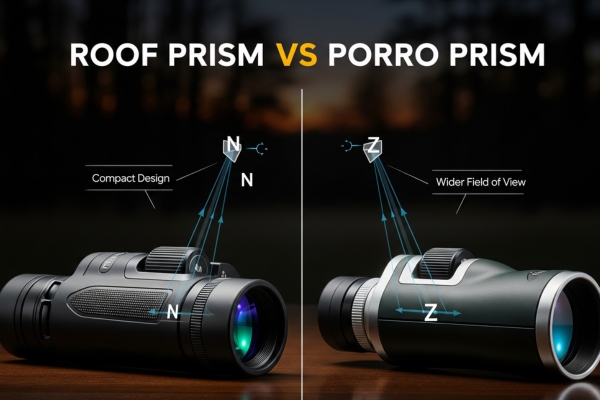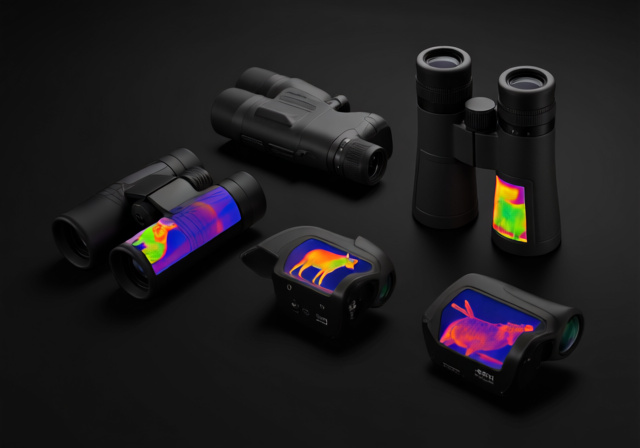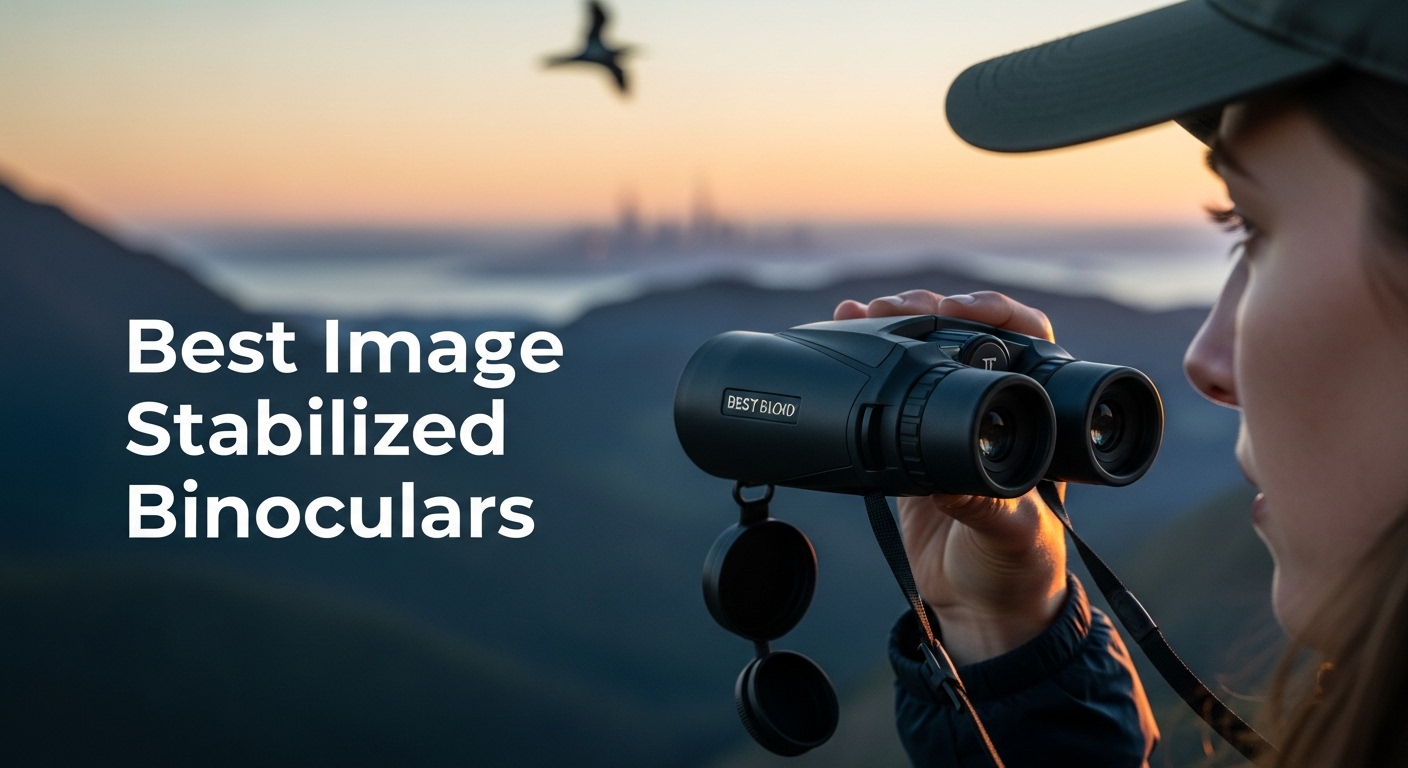



When I first started researching binoculars, the debate between roof prism and porro prism designs completely confused me. After years of testing dozens of models and understanding the optical physics behind each design, I’ve learned that the choice between these two prism systems fundamentally affects everything from image quality to durability to price. Whether you’re choosing binoculars for birdwatching, astronomy, or general outdoor use, understanding these prism types will help you make a much more informed decision.
The prism system in binoculars serves a crucial purpose beyond what many people realize. Without prisms, the image you’d see through binoculars would be upside down and reversed left-to-right, making them practically unusable for terrestrial viewing. But prisms do much more than just correct image orientation – they determine the binocular’s size, weight, optical performance, and even manufacturing cost. In this comprehensive guide, we’ll explore exactly how binoculars work and why the choice of prism system matters so much.
The fundamental difference between roof prism and porro prism binoculars lies in how they bend and redirect light through the optical system. Porro prism binoculars, invented by Italian optician Ignazio Porro in 1854, use an offset design where the objective lenses are wider apart than the eyepieces. Roof prism binoculars, developed later in the 1880s by various German optical engineers, feature a straight-through design where the objective lenses and eyepieces are aligned. This basic architectural difference creates a cascade of performance and practical implications that we’ll explore in detail.
Before diving into the specific differences between roof and porro prisms, we need to understand what prisms actually do in binoculars. When light enters through the objective lens, it creates an inverted and reversed image – similar to what happens in a camera. The prism system’s job is to flip this image both vertically and horizontally so you see a correct, upright view of the world. This process, called image erection, requires the light to be reflected multiple times within the prism assembly.
The way prisms accomplish this image correction directly impacts the binocular’s optical efficiency. Each time light reflects off a surface inside the prism, some light is lost. In perfect conditions with ideal materials, total internal reflection can preserve nearly all the light, but real-world manufacturing always involves some losses. The number of reflections, the angles involved, and the coatings applied all affect how much light successfully reaches your eyes. This light transmission efficiency is one of the key differences between roof and porro prism designs.
Beyond image correction, prisms also fold the light path, allowing binoculars to be much more compact than they would be with straight-through optics. Without prisms, a pair of 10x magnification binoculars would need to be over a foot long to achieve the necessary focal length. The prism system effectively folds this long light path into a much more manageable package, though roof and porro prisms accomplish this folding in very different ways.
The porro prism system uses two right-angled prisms positioned at 90 degrees to each other, creating the characteristic zigzag light path that gives porro prism binoculars their distinctive offset appearance. Named after inventor Ignazio Porro, this design has remained fundamentally unchanged since the 1850s because of its elegant simplicity and optical efficiency. Each prism in the pair handles one axis of image correction – the first prism flips the image horizontally, while the second flips it vertically.
One of the greatest advantages of the porro prism design is that it achieves total internal reflection naturally, without requiring special coatings. When light hits the prism faces at the correct angles, physics ensures that 100% of the light is reflected – at least in theory. In practice, modern porro prism binoculars typically achieve 90-95% light transmission when high-quality glass and anti-reflective coatings are used on the external surfaces. This inherent efficiency is why porro prism binoculars often deliver brighter images than roof prism models at the same price point.
The offset design of porro prisms creates another optical advantage: increased stereoscopic effect. Because the objective lenses are spaced wider apart than your eyes (called objective lens separation or stereoscopic base), porro prism binoculars provide enhanced depth perception. This makes objects appear more three-dimensional, which is particularly noticeable when viewing subjects at moderate distances. For activities like watching wildlife or sports events, this enhanced 3D effect can make the viewing experience more immersive and enjoyable.
Manufacturing porro prism binoculars is relatively straightforward, which contributes to their lower cost. The prisms themselves are simple to produce and align, requiring less precision than roof prism assemblies. The external moving parts for focusing are also simpler to seal against moisture, though the offset barrels do create more surface area that needs protection. This combination of optical efficiency and manufacturing simplicity is why you’ll find excellent porro prism binoculars at very affordable prices.
Roof prism binoculars use a more complex prism arrangement to achieve their streamlined, straight-through design. The most common roof prism systems are the Schmidt-Pechan (used in most consumer binoculars) and the Abbe-König (found in premium models). These designs get their name from the roof-like ridge where two prism faces meet at a 90-degree angle, resembling the peak of a house roof. This ridge is where the optical magic happens, but it’s also where significant challenges arise.
The Schmidt-Pechan roof prism system, which dominates the market today, uses two prisms to fold the light path into a compact straight tube. The first prism has the characteristic roof edge, while the second prism completes the image erection. However, this design requires the light to undergo five reflections, including one that doesn’t achieve total internal reflection. This problematic reflection typically loses about 12-15% of the light unless a special reflective coating is applied. High-quality roof prism binoculars use either aluminum or silver mirror coatings on this surface, with the best models using multi-layer dielectric coatings that can achieve 99% reflectivity.
The roof edge itself creates another optical challenge called phase shift. When light waves reflect off the two surfaces of the roof, they can become slightly out of phase with each other, reducing image contrast and resolution. To combat this, quality roof prism binoculars apply phase-correction coatings (often called P-coating) to the roof surfaces. These incredibly thin coatings – typically just a quarter wavelength of light thick – ensure that light waves remain in phase after reflection. Without phase coating, roof prism binoculars simply cannot match the image quality of porro prisms.
The Abbe-König roof prism design, found in premium binoculars, takes a different approach that avoids some of these issues. This system uses longer prisms and doesn’t require mirror coatings because all reflections achieve total internal reflection. However, the longer prisms make the binoculars heavier and more expensive to manufacture. The Abbe-König design also doesn’t suffer from the same phase shift issues as Schmidt-Pechan prisms, resulting in superior image quality that can match or exceed the best porro prism designs.
When comparing the optical performance of roof and porro prism binoculars, we need to consider multiple factors that affect image quality. Light transmission is perhaps the most fundamental difference. A high-quality porro prism binocular with modern multi-coatings can achieve 92-95% total light transmission. To match this performance, a roof prism binocular needs premium dielectric coatings and phase correction, significantly increasing the cost. At the budget end of the market, porro prisms consistently deliver brighter images than similarly priced roof prisms.
Image sharpness and contrast also differ between the two designs, though the gap has narrowed considerably with modern technology. Porro prisms have an inherent advantage because they don’t suffer from phase shift issues. The image remains crisp and contrasty without requiring special coatings. Budget roof prism binoculars without phase coating often show reduced contrast, making fine details harder to discern, especially in challenging lighting conditions. However, premium roof prism models with proper phase correction can deliver image quality that rivals the best porro prisms.
Chromatic aberration, the color fringing you sometimes see around high-contrast edges, is handled similarly by both prism types when using the same glass quality. The real difference comes from the glass types commonly used. Premium roof prism binoculars often use extra-low dispersion (ED) or fluorite glass elements to minimize chromatic aberration, partly to justify their higher prices. Porro prism binoculars can use the same premium glass, but it’s less common in the mid-range market where porros typically compete.
Field of view, the width of the scene visible through the binoculars, isn’t inherently limited by either prism type. However, the physical design constraints often result in differences. Porro prism binoculars can more easily accommodate the large prisms needed for very wide fields of view. The offset barrels provide more room for bigger prisms without making the binoculars unwieldy. Roof prisms, constrained by their straight-tube design, sometimes sacrifice field of view to maintain a compact size, though modern wide-angle roof prism designs have largely overcome this limitation.
The most obvious difference between roof and porro prism binoculars is their physical appearance and how this affects handling. Roof prism binoculars, with their straight-barrel design, are typically more compact and easier to hold for extended periods. The barrels align naturally with your grip, and the central focusing wheel falls right under your index finger. This ergonomic advantage becomes particularly noticeable during long observation sessions or when hand-holding higher magnification models where stability is crucial.
Porro prism binoculars, with their wider objective lens spacing, can be more challenging to hold steady, especially for people with smaller hands. The offset barrels create a less balanced feel, with more weight distributed toward the front of the binoculars. However, many users find that the wider grip actually provides better stability once they adapt to it. The separated barrels also provide more surface area for gripping, which can be advantageous when wearing gloves in cold weather.
Weight distribution differs significantly between the two designs. Roof prism binoculars concentrate their weight along the central axis, making them feel lighter even when they weigh the same as equivalent porro prism models. This centered weight distribution reduces arm fatigue during extended use. Porro prism binoculars, with their offset objectives, have a more forward-heavy balance that some users find tiring. However, this forward weight can actually help stabilize the image when using a neck strap to create a stabilizing triangle with your arms.
Durability and weather resistance represent another key difference. The straight-through design of roof prism binoculars makes them easier to seal against moisture and dust. Most quality roof prism models are nitrogen or argon purged and O-ring sealed, making them fully waterproof and fog-proof. Porro prism binoculars can achieve the same level of weather resistance, but the more complex external focusing mechanism and greater surface area make it more challenging and expensive to implement effective sealing.
Understanding the manufacturing process helps explain the significant price differences between roof and porro prism binoculars. Porro prisms are relatively simple to manufacture – they’re essentially precisely ground blocks of glass with flat surfaces. The tolerances are important but achievable with standard optical manufacturing equipment. The prisms are also easier to align during assembly, as small alignment errors have less impact on image quality. This manufacturing simplicity translates directly to lower costs for consumers.
Roof prisms, particularly the Schmidt-Pechan design, require much more precise manufacturing. The roof edge where the two prism faces meet must be ground to incredibly tight tolerances – typically within 2-3 arc seconds. To put this in perspective, that’s about 1/1000th of a degree. Any deviation from a perfect 90-degree angle at the roof edge will cause a double image. Achieving and maintaining these tolerances requires specialized equipment and skilled technicians, significantly increasing production costs.
The coating requirements add another layer of complexity and cost to roof prism manufacturing. While porro prisms only need anti-reflective coatings on their external surfaces, roof prisms require multiple specialized coatings. The mirror coating on one surface, phase-correction coating on the roof edges, and multi-layer anti-reflective coatings on all air-to-glass surfaces must be applied with extreme precision. Each coating step adds time, complexity, and cost to the manufacturing process.
Quality control is also more demanding for roof prism binoculars. Every unit must be carefully tested for proper alignment, as even tiny errors can cause double images or poor collimation. The internal focusing mechanism in most roof prism designs is more complex than the external focusing used in many porro prism models, requiring tighter manufacturing tolerances and more precise assembly. All these factors combine to make roof prism binoculars significantly more expensive to produce, especially at the quality levels demanded by serious users.
The type of glass used in prisms significantly affects optical performance and cost. The two most common prism glasses are BK7 (borosilicate crown glass) and BAK4 (barium crown glass). BAK4 has a higher refractive index (1.569 vs 1.517 for BK7), which provides better light transmission and edge sharpness. In porro prism binoculars, the difference is quite noticeable – BK7 prisms often show dark edges in the exit pupil, while BAK4 prisms provide edge-to-edge brightness.
In roof prism binoculars, the glass type is even more critical because of the additional reflections and coatings involved. BAK4 glass is essentially mandatory for quality roof prism models, as the superior light transmission helps offset the inherent losses in the roof prism design. Some premium manufacturers use even higher-index glasses like SK15 or proprietary formulations that further improve light transmission and reduce aberrations.
The physical properties of the glass also affect durability and environmental resistance. BAK4 glass is slightly softer than BK7, making it more susceptible to scratching during manufacturing but also easier to polish to the precise surfaces required for roof prisms. Both glasses are quite stable over time and temperature, though rapid temperature changes can cause temporary performance issues if the binoculars aren’t properly temperature-compensated in their design.
Modern coating technology has revolutionized binocular performance, particularly for roof prism designs. Anti-reflective coatings are applied to all air-to-glass surfaces to minimize light loss and internal reflections. Basic single-layer coatings reduce reflections from about 4% to 1.5% per surface. Multi-layer coatings can reduce this to 0.25% or less, making a dramatic difference when light passes through 10-14 glass surfaces in a typical binocular.
Phase-correction coatings, essential for roof prism binoculars, work on a completely different principle. These coatings don’t reduce reflections but instead ensure that light waves reflecting off the roof surfaces remain in phase. The coating thickness must be controlled to within nanometers – about 1/1000th the thickness of a human hair. Most manufacturers use a vapor deposition process in a vacuum chamber to achieve this precision, adding significant cost to production.
Dielectric coatings represent the pinnacle of mirror coating technology for roof prisms. Unlike metallic mirror coatings that absorb some light, dielectric coatings use alternating layers of materials with different refractive indices to create constructive interference that reflects virtually all light. Premium roof prism binoculars may have 50 or more layers in their dielectric coatings, each precisely controlled in thickness. These coatings can achieve over 99% reflectivity, finally allowing roof prisms to match porro prisms in light transmission.
Different activities favor different prism types based on their unique requirements. For astronomy, where light-gathering ability is paramount, large-aperture porro prism binoculars traditionally dominate. The superior light transmission of affordable porro prisms makes them ideal for viewing faint celestial objects. The enhanced depth perception is less relevant for astronomical viewing since everything is effectively at infinite distance, but the wider objective lens separation in large astronomical binoculars (like 20×80 or 25×100 models) is only practical with porro prism designs.
Birdwatching presents a more nuanced choice. Serious birders often prefer roof prism binoculars for their superior handling and weather resistance. The ability to track fast-moving birds is enhanced by the better balance and ergonomics of roof prism designs. However, many birders on a budget find that mid-range porro prism binoculars deliver better optical performance for the money, accepting the handling compromises for superior image quality. The enhanced depth perception of porro prisms can also help judge distances to birds in complex environments like forests.
For marine use, the waterproofing advantage of roof prism binoculars is significant, but many marine binoculars still use porro prisms. The individual focus systems common in marine binoculars are simpler to implement in porro prism designs, and the wider stance can actually provide better stability on a moving boat. Large 7×50 marine binoculars are almost exclusively porro prism designs because the large exit pupil and prism size requirements are more practical in the offset barrel configuration.
Hunting applications often favor roof prism designs for their compact size and rugged construction. The ability to carry binoculars comfortably for hours while hiking, combined with superior weather resistance, makes roof prisms the practical choice. The straight barrels also fit better in most binocular cases and are less likely to snag on vegetation. However, budget-conscious hunters often choose porro prism models, accepting the bulk for better optical performance per dollar spent.
When deciding between roof and porro prism binoculars, your budget is often the primary constraint. If you have less than $200 to spend, porro prism binoculars will almost always provide better optical performance. The image will be brighter, sharper, and show better contrast than similarly priced roof prism models. Only when you reach the $300-500 range do roof prism binoculars with proper phase coatings begin to match the optical performance of good porro prism models.
Consider your intended use carefully. If you’ll be carrying binoculars for extended periods, the compact size and better balance of roof prism designs may justify the extra cost. For stationary use like astronomy or surveillance, the bulk of porro prism binoculars matters less, and their optical advantages shine. If you frequently use binoculars in harsh weather, the superior sealing of roof prism designs provides peace of mind, though quality waterproof porro prism models are available.
Your physical considerations matter too. People with smaller hands often find roof prism binoculars easier to hold steady. The closer interpupillary distance adjustment on roof prism models also makes them better for people with closely-set eyes or children. Conversely, if you wear thick glasses, the longer eye relief often found in porro prism designs might be advantageous, though modern roof prism binoculars increasingly offer generous eye relief for spectacle wearers.
Think about long-term value as well. High-quality roof prism binoculars from reputable manufacturers often come with lifetime warranties and maintain their alignment better over time due to internal focusing mechanisms. While the initial investment is higher, a premium roof prism binocular can last decades with minimal maintenance. Porro prism binoculars, especially those with external focusing, may require more frequent servicing but are often easier and cheaper to repair when issues arise.
The future of prism technology continues to evolve with advances in materials science and manufacturing techniques. New glass formulations with even higher refractive indices are being developed, potentially allowing for more compact designs without sacrificing light transmission. Computer-aided manufacturing is making it possible to hold tighter tolerances at lower costs, gradually closing the price gap between roof and porro prism binoculars.
Coating technology continues to advance as well. Research into metamaterials and nanostructured coatings promises even better anti-reflective properties and potentially revolutionary new capabilities. Some manufacturers are experimenting with curved prism surfaces that could correct aberrations within the prism itself, potentially eliminating the need for some lens elements and creating lighter, sharper binoculars.
Hybrid designs that combine elements of both roof and porro prisms are also being explored. Some manufacturers have developed offset roof prism designs that provide some of the depth perception advantages of porro prisms while maintaining the streamlined shape of roof prism binoculars. These innovations suggest that the traditional distinction between roof and porro prisms may become less clear-cut in the future.
For beginners on a budget, porro prism binoculars offer the best value, providing superior optical quality for the price. A good pair of porro prism binoculars in the $100-200 range will deliver bright, sharp images that can rival roof prism models costing twice as much. However, if you can afford to spend $400 or more and value portability and handling, roof prism binoculars might be worth the investment for their superior ergonomics and weather resistance.
Roof prism binoculars cost more due to their complex manufacturing requirements. The roof edge must be ground to incredibly precise tolerances (within 2-3 arc seconds), and multiple specialized coatings are required including phase correction and mirror coatings. The internal focusing mechanism is also more complex to manufacture and assemble. All these factors combine to make roof prism binoculars significantly more expensive to produce than porro prism models with similar optical specifications.
Yes, porro prism binoculars do provide enhanced depth perception due to their wider objective lens separation. This increased stereoscopic base creates a more pronounced 3D effect, particularly noticeable at moderate viewing distances (10-100 meters). The effect diminishes at very long distances where everything appears at infinity, but for nature observation and sports viewing, the enhanced depth perception of porro prisms can make the viewing experience more immersive.
Modern high-end roof prism binoculars with dielectric coatings and phase correction can match or even slightly exceed the brightness of porro prism binoculars. However, this requires expensive multi-layer coatings that significantly increase the cost. At the budget and mid-range price points, porro prism binoculars typically deliver brighter images because they don’t require special coatings to achieve high light transmission.
Porro prism binoculars aren’t inherently more fragile, but their external moving parts and offset design can make them more vulnerable to damage from impacts. The external focusing mechanism is more exposed to dust and moisture, potentially requiring more frequent maintenance. Roof prism binoculars with internal focusing are generally more robust and better sealed against the elements, though quality porro prism models can be equally durable when properly constructed.
Phase coating corrects the phase shift that occurs when light reflects off the roof edge in roof prism binoculars. When light waves split at the roof edge and reflect off the two surfaces, they can become out of phase, reducing contrast and resolution. Phase coatings, applied at precisely controlled thicknesses, ensure the light waves recombine in phase. Porro prisms don’t need phase coating because their design doesn’t create this phase shift problem.
BAK4 glass is superior for both prism types, offering better light transmission and edge sharpness due to its higher refractive index. In porro prism binoculars, BK7 prisms often show dark edges in the exit pupil, while BAK4 provides edge-to-edge brightness. For roof prism binoculars, BAK4 is essentially mandatory for quality models as it helps offset the inherent light losses in the design. Only consider BK7 prisms in very budget-conscious porro prism purchases.
No, you cannot convert between roof and porro prism designs as they are fundamentally different optical systems. The entire binocular body, prism assembly, and focusing mechanism are designed specifically for one prism type. The barrel spacing, optical path length, and mounting systems are completely incompatible between the two designs. If you want to switch prism types, you need to purchase new binoculars.
The choice between roof prism and porro prism binoculars ultimately depends on your specific needs, budget, and priorities. Porro prism binoculars continue to offer exceptional value, delivering superior optical performance at lower price points. Their simpler design, natural light transmission efficiency, and enhanced depth perception make them ideal for budget-conscious users and specific applications like astronomy. The main trade-offs are increased bulk and potentially less weather resistance.
Roof prism binoculars justify their higher cost through superior ergonomics, weather resistance, and durability. Modern coating technologies have eliminated most of the optical disadvantages that once plagued roof prism designs, allowing premium models to match or exceed porro prism performance. For users who value portability, handling, and long-term reliability, the extra investment in quality roof prism binoculars often proves worthwhile.
Rather than declaring one design definitively better, I’ve learned to appreciate both for their unique strengths. My collection includes both types – compact roof prism binoculars for hiking and travel, and larger porro prism models for astronomy and stationary observation. Understanding the technical differences we’ve explored helps you make an informed decision based on your actual needs rather than marketing claims or outdated assumptions about optical superiority.
As technology continues to advance, the gap between roof and porro prism performance at given price points continues to narrow. However, the fundamental physics and manufacturing challenges ensure that both designs will remain relevant for different users and applications. Whether you choose the classical efficiency of porro prisms or the modern convenience of roof prisms, understanding these differences ensures you get the best binoculars for your specific needs and budget.







